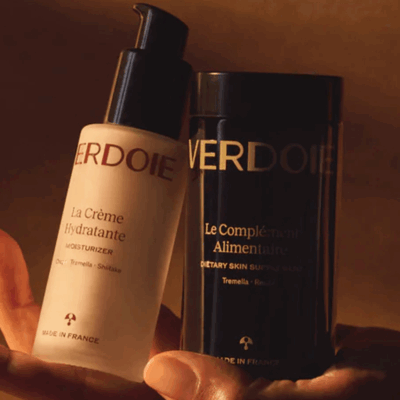
Nira’s Skincare Devices Are Spreading Laser Technology Beyond Dermatologists’ Offices
At-home skin laser brand Nira is on a growth tear.
The 4-year-old brand quadrupled sales from 2022 to 2023 and is on pace to double sales this year, thanks in part to a direct-to-consumer launch in the United Kingdom last month. Ninety-five percent of its sales are from its website, where its main products are the $599 Pro Laser and $449 Precision Laser. The United States Food and Drug Administration-cleared devices feature patented non-fractional laser technology designed to painlessly rebuild collagen in the skin.
Introduced in June 2023, Pro Laser has a larger aperture than Precision Laser to enable usage for the entire face in three minutes versus two minutes for just the eye area with Precision Laser. Pro Laser accounts for 90% of Nira’s current sales. “It’s $150 more to be able to treat so many different areas,” says Nira founder David Bean. “So, the value proposition, people love it.”
Nira aims to release a new laser every year to 18 months. An at-home hair removal laser is in the works as well as an acne tool. Nira’s competitors in the beauty industry often call their products laser devices, but most don’t actually have lasers at all. Instead, they depend on LED light or ultrasound. Nira holds 19 patents on its at-home laser devices, and it asserts its laser technology is 200X more powerful than LED light and 190X more powerful than competitors’ at-home laser technology. The brand’s products are made in the United States and come with a money-back guarantee.
“We are the only [device] I know of in an industry where you buy a device, we claim you see great results in 90 days, then you get full money back in 90 days if you’re not happy,” says Bean. “Our return rates are very low. We want people to feel comfortable like they’re not getting tricked into buying or tricked into keeping it. We want them to feel like we’re partnering together on your skincare journey.”
Nira’s growth reflects consumers’ persistent appetite for at-home beauty devices that many adopted during pandemic lockdowns. According to 2023 survey data from market research firm Mintel, 41% of consumers used skincare devices at home, and daily skincare device use has risen significantly in recent years from 31% in 2021 to 44% last year. Among device users surveyed by Mintel, 34% plan to buy another device this year. Among non-users, 36% are interested in buying one.

In 2003, Bean, a telecommunications engineer by training, started SemiNex Corp., a supplier of laser diodes for medical, military and industrial applications. About a decade ago, he began adapting laser chips for aesthetics purposes, and SemiNex jumped on selling the chips for dermatological and plastic surgery laser systems. Bean says, “The medical systems went from these large systems that are very unreliable and super expensive to laptop size lasers, and our chips helped enable that.”
Bean realized, however, that aggressive in-office laser treatments weren’t for everyone. “There was downtime, and it’s expensive,” he recounts. “There has to be a better way, and for this to be widely circulated, it has to be enjoyable without side effects at a good price, but still have all the efficacy. That’s the problem I went on to solve.”
In 2012, Bean established Nira to develop a handheld laser, complete clinical studies on it and achieve FDA clearance. The process took almost eight years. Bean planned to sell Nira’s device to a large multinational based on its standout clinicals. He was in for a rude awakening. “The big companies don’t buy just technology,” says Bean. “They want to see a brand that has some scale with customer acceptance and good reviews and no potential issues in the marketplace with customer response.”
While he couldn’t nail down a sale to a conglomerate out of the gate, he could fundraise by showing Nira’s results and its capacity to bring dermatological-style treatments to people’s homes. Bean raised almost $10 million from friends, family and angel investors for Nira, and the brand hit the market initially with Precision Laser for the eye area.
It was slow going at first, but took off in year three, and influencer partnerships were a big reason why. Nira instructed influencers to post about their experiences with its device after 90 days of usage to convey its effects. By Black Friday of 2022, Precision Laser was sold out—and it ended up selling out for seven months. The demand continued, though, and Nira kept selling units and letting customers know there would be long lead times.
Beauty specialty retailers like Ulta Beauty and Sephora are key targets for slews of emerging beauty brands. Nira isn’t ruling out the beauty specialty channel for the future, but Dean isn’t in a rush to enter it because he understands tremendous consumer education is required to persuade shoppers to purchase a pricy skincare device at stores. Such devices have had mixed track records at specialty retail, where a dearth of replenishment opportunities compounds their challenges.
Today, spas like The Spa at Four Seasons Hotel Philadelphia account for 5% of Nira’s business. Bean is bullish on Nira’s relationships with spas, where aestheticians are helpful educators and trusted authorities. Spas offer a treatment with its device as a $20 to $40 upsell on a service, and they can put it in their retail assortment, too. Nira plans to extend spa distribution domestically and internationally.





Leave a Reply
You must be logged in to post a comment.